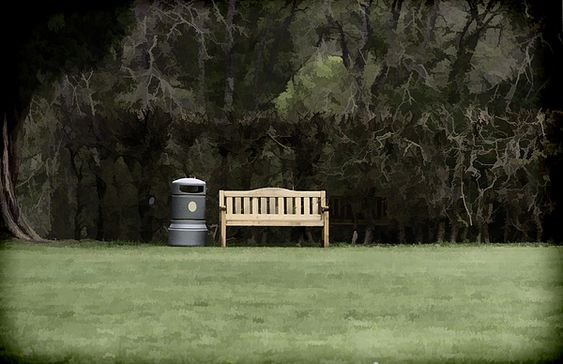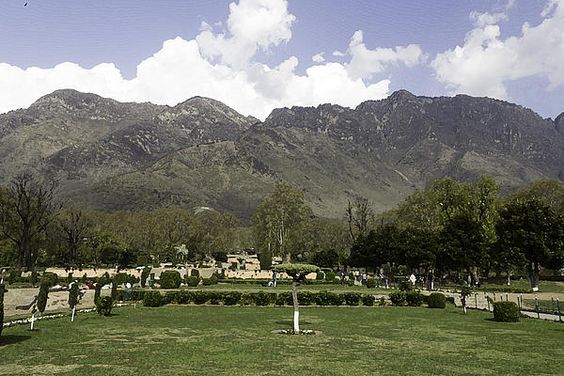There are scenes in nature that stop you in your tracks, evoking a complex mix of emotions and thoughts. The photograph before us is one such scene: a substantial pile of cut tree trunks, resting near the serene shore of a lake, with the gentle slope of a mountain and its living brethren forming a backdrop. This isn't a scene of rampant, chaotic destruction, as one might initially fear. The context suggests a more considered approach – a "systematic but scientific method of logging," designed to ensure that this very place can be logged again and again, fostering a cycle of use and renewal.
Yet, despite this understanding of responsible stewardship, there's an undeniable pang, a feeling almost "painful to see so many tree trunks lying in a pile." This visceral reaction speaks to our deep, almost primal connection with trees, and the visual impact of their transformation from towering, living entities to processed resources. Let's explore this image, its abstract qualities, the practices it hints at, and the broader story of our relationship with these vital components of our planet.
An Abstract Glimpse: Forms, Textures, and a Quiet Story
Viewed with an abstract eye, the photograph is a compelling composition of textures, shapes, and subtle colour harmonies. The dominant feature is, of course, the pile of logs. These are not uniform; they vary in girth and length, their dark, deeply grooved bark still clinging to most of them. The cut ends, however, offer a stark contrast – pale, almost creamy circular faces, each revealing the unique fingerprint of the tree's life through its growth rings. These concentric circles, some tight, some wider, tell silent stories of seasons past, of droughts and bountiful rains. They are like natural mandalas, drawing the eye inward.
The logs are stacked with a certain practical order, yet there's an inherent randomness in their placement, creating a dynamic interplay of cylindrical forms and diagonal lines. They possess a tangible weight and solidity. To the right of the main pile, a smaller, more haphazard collection of thinner, lighter-barked branches – perhaps birch or aspen – lies scattered, their smoother textures and paler tones contrasting with the ruggedness of the larger trunks.
Framing this scene of harvest are living trees. To the left, the sturdy, deeply textured trunk of a mature tree anchors the composition, its branches reaching out of frame. Above and behind the log pile, another tree, its leaves a soft, fresh green, filters the light, suggesting a time of year when life is reasserting itself – perhaps spring or early summer. This juxtaposition is powerful: the still, cut wood in the foreground, and the vibrant, living canopy above and beyond.
The lush green undergrowth at the base of the pile adds another layer of life, nature already beginning to reclaim or coexist with the human intervention. In the hazy distance, the far shore of the lake and the gentle, tree-dotted slope of a mountain provide a serene, almost muted backdrop, suggesting a vast, encompassing natural environment. The overall palette is one of earthy browns, deep greens, and the pale cream of cut wood, under a soft, diffused light that lends a quiet, contemplative mood to the scene.
From an abstract perspective, this image is about:
Cycles: The rings in the wood speak of natural cycles of growth; the pile itself speaks of a human cycle of harvest and use.
Transformation: Living trees transformed into raw material, awaiting further transformation.
Order and Chaos: The somewhat orderly pile of large logs versus the more scattered smaller branches; the human-imposed order on a natural resource.
Stillness and Potential: The logs are static, yet they hold immense potential for future use.
Human Presence in Nature: A clear sign of human activity, yet integrated within a natural setting, hinting at a relationship rather than outright conquest.
The Context: Scientific Logging vs. Unfettered Exploitation
The idea that this scene represents a "systematic but scientific method of logging that ensured that the place could be logged again and again" is crucial. This points towards practices of sustainable forestry or responsible forest management, which are vastly different from unchecked commercial exploitation.
Sustainable Forestry Principles:
Selective Harvesting: Instead of clear-felling entire areas, scientific logging often involves selectively cutting mature or specific types of trees, leaving younger trees and a diverse forest structure intact to regenerate.
Planned Rotation Cycles: Forests are managed in sections, with carefully planned cutting cycles that allow areas to regrow and mature before they are harvested again. This ensures a continuous supply of timber without depleting the forest resource.
Reforestation and Regeneration: Active efforts are made to ensure new trees grow, either through natural regeneration encouraged by the selective cutting, or by planting new seedlings.
Minimizing Environmental Impact: Care is taken to reduce soil erosion, protect waterways, and minimize damage to remaining trees and wildlife habitats during logging operations. This might involve specific felling techniques and careful extraction paths.
Monitoring and Adaptation: Forest health and growth are continuously monitored, and management plans are adapted based on scientific data and ecological understanding.
Contrast with Destructive Commercial Logging:
This responsible approach is a world away from unsustainable commercial logging practices often seen in some parts of the world, which can involve:
Clear-Cutting: Removing all trees in a large area, leading to massive habitat loss, soil erosion, and disruption of ecosystems.
Lack of Reforestation: No effort made to replant or encourage regeneration, leading to permanent deforestation or degradation of forest land.
Damage to Biodiversity: Indiscriminate logging can destroy critical habitats for countless species of plants and animals.
Illegal Logging: Operations that violate national or international laws, often targeting protected areas or endangered tree species.
The scene in the photograph, if indeed part of a scientific and sustainable plan, represents human interaction with nature that aims for a balance between utilizing a valuable resource and ensuring the long-term health and productivity of the forest ecosystem.
The Emotional Resonance: A "Painful Sight" Amidst Understanding
Even with the knowledge that the logging might be sustainable, the initial emotional reaction – that it’s "painful to see so many tree trunks lying in a pile" – is entirely valid and deeply human. Trees are more than just timber; they are:
Symbols of Life and Longevity: Many trees live for decades, even centuries, silently witnessing the passage of time. Their felling can feel like the loss of something ancient and venerable.
Providers of Shelter and Beauty: They create shade, offer homes to wildlife, and contribute immeasurably to the aesthetic beauty of our landscapes.
Connections to Nature: For many, forests and individual trees evoke feelings of peace, tranquility, and a connection to the natural world.
The Visual Impact: A large pile of felled logs is a stark visual representation of transformation and, on some level, a form of "death" for those individual trees. The neat, circular cuts revealing the pale inner wood can seem almost like wounds.
This emotional response doesn't necessarily contradict the acceptance of responsible forestry. It highlights our innate appreciation for living trees and the visual disruption caused by their harvest, even when that harvest is necessary and planned for renewal. It’s a tension between our emotional connection to nature and our practical need for its resources.
The Indispensable Role of Trees and Forests in Our World
The "pain" felt at seeing felled trees is perhaps amplified by our growing understanding of just how crucial healthy forests are for the planet and for human well-being.
Oxygen Production: Trees are often called the "lungs of the planet," releasing vital oxygen through photosynthesis.
Carbon Sequestration: Forests absorb massive amounts of carbon dioxide, a key greenhouse gas, helping to mitigate climate change.
Biodiversity Havens: Forests are home to a vast majority of the world's terrestrial biodiversity, providing habitat for countless species of plants, animals, fungi, and microorganisms.
Soil Conservation and Water Regulation: Tree roots help bind soil, preventing erosion. Forests play a critical role in the water cycle, influencing rainfall patterns, filtering water, and regulating river flows.
Economic Resources: Beyond timber, forests provide numerous other resources, including medicinal plants, fruits, nuts, and resins, supporting livelihoods for millions.
Recreation and Well-being: Forests offer spaces for recreation, relaxation, and spiritual solace, contributing to human mental and physical health.
Sustainable forestry aims to balance the need for wood products with the imperative to maintain these vital ecological services.
From Trunk to Product: The Journey of "Further Processing"
The piled logs in the image are at an early stage of their journey to becoming useful products. "Further processing" involves several steps:
Transportation: The logs will be transported from the logging site to a sawmill or processing facility.
Debarking: The bark is typically removed from the logs.
Sawmilling: The logs are cut into various sizes of lumber, such as planks, beams, boards, or posts, depending on their intended use. This is often the primary milling process.
Seasoning/Drying: Green wood contains a lot of moisture. The cut lumber needs to be dried, either by air drying (stacking it with spaces for air circulation) or kiln drying (using controlled heat and humidity in a chamber). Proper drying is crucial to prevent warping, cracking, and to improve the wood's strength and workability.
Planing and Shaping: Dried lumber may then be planed to create smooth surfaces and cut or shaped into more precise dimensions for specific applications.
Further Manufacturing: This lumber then becomes the raw material for a vast array of products, from building houses to crafting fine furniture.
Beyond the Obvious: The Diverse and Surprising Uses of Wood
When we see a pile of logs, our minds often jump to obvious uses like construction timber or firewood. But wood is an incredibly versatile material with a surprising range of applications:
Construction: Framing for houses, beams, flooring, decking, cladding, shingles.
Furniture: From rustic tables to intricately carved antiques.
Paper Products: A huge consumer of wood pulp.
Musical Instruments: Many instruments, like violins, guitars, and pianos, rely on specific types of wood for their acoustic properties.
Tools and Handles: For hammers, axes, shovels, and kitchen utensils.
Art and Sculpture: Wood carving is an ancient art form.
Flooring and Paneling: Adding warmth and beauty to interiors.
Packaging: Crates, pallets, and even some specialized food packaging.
Sporting Goods: Baseball bats, cricket bats, hockey sticks, skis.
Engineered Wood Products: Plywood, MDF (Medium Density Fiberboard), OSB (Oriented Strand Board), glulam beams – these products utilize wood fibers or veneers in innovative ways.
Bioenergy: Wood pellets, firewood, and biomass for heating and electricity generation.
Chemicals and Byproducts: Cellulose (used in plastics, textiles like rayon, and food additives), lignin, tannins, and other chemicals can be extracted from wood for various industrial uses.
The logs in the picture, therefore, represent not just an ending for those individual trees, but a beginning for countless potential products that are integral to our lives.
Conclusion: A Landscape of Use and Renewal
The image of cut tree trunks piled by a lakeside, under the watch of living trees and distant mountains, is a powerful tableau. It encapsulates the complex relationship between humanity and the natural world – our reliance on its resources, our capacity to manage them wisely, and the emotional resonance that such interactions evoke.
While the initial sight might elicit a sense of loss, understanding the context of sustainable, scientific logging allows for a more nuanced appreciation. It becomes a scene not just of felling, but of a planned harvest that anticipates and allows for regeneration. These logs, these "felled giants," are a testament to the enduring utility of wood and a reminder of our responsibility to ensure that our use of this vital resource is balanced with a commitment to the health and continuity of our forests for generations to come. The quiet lakeside, for a time, holds the promise of warmth, shelter, and utility, all while the forest around it continues its timeless cycle of life, death, and rebirth.
If you like this image, please buy a print from my
Fine Art America store as well as take a look at my other products.











 RSS
RSS
